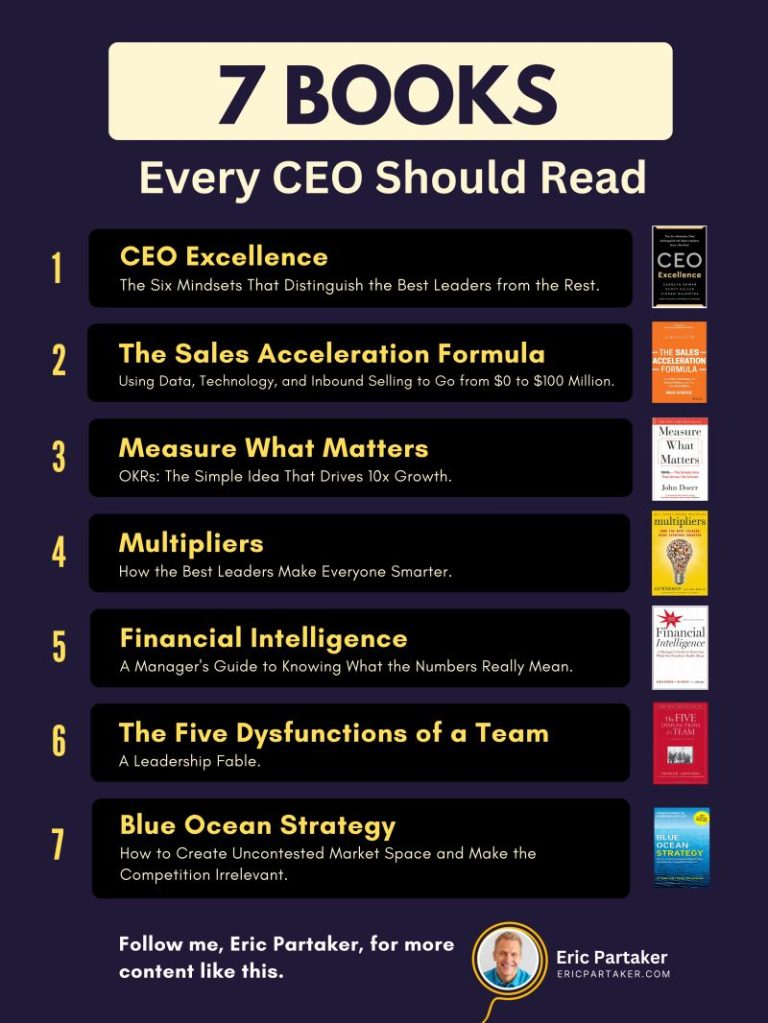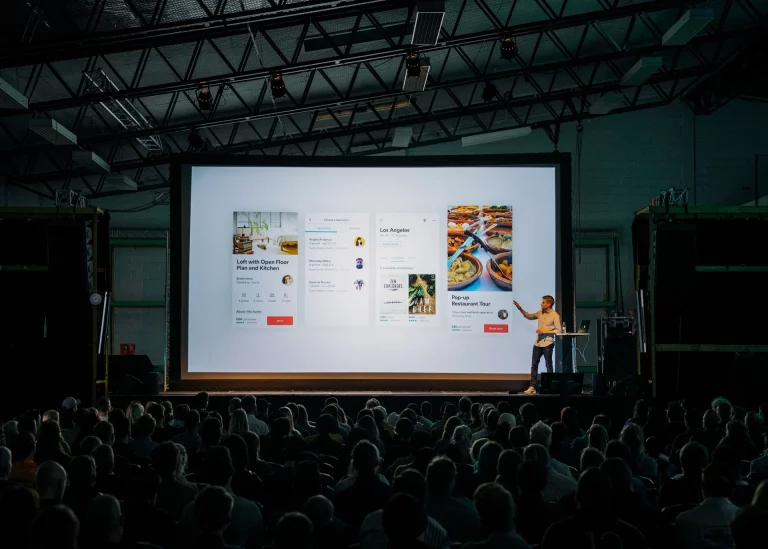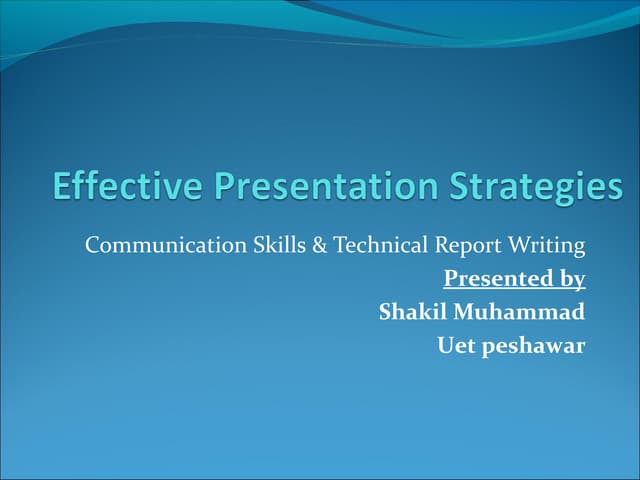What Makes A Good Presentation For A Conference?
Are you ready to captivate your audience at your next conference presentation? In today’s fast-paced world, it is essential to understand what makes a good presentation stand out from the rest. Whether you are a seasoned presenter or just starting out, this topic will provide you with valuable insights and practical tips to wow your audience and leave a lasting impact.
A good presentation for a conference goes beyond just sharing information. It is about creating a memorable experience that engages and inspires your audience. From the moment you step onto the stage, your words, visuals, and delivery should work together harmoniously to captivate the attention of your listeners. In this introduction, we will explore key elements such as storytelling, visual aids, and effective communication techniques that will help you craft a presentation that leaves a lasting impression. Get ready to take your conference presentations to new heights and leave your audience wanting more!
A good presentation for a conference should be engaging, well-structured, and visually appealing. It should have a clear and concise message, supported by relevant content and visuals. The speaker should have good public speaking skills, maintaining eye contact and using appropriate body language. Additionally, incorporating interactive elements and allowing for audience participation can enhance the overall experience.
What makes a good presentation for a conference?
A good presentation for a conference is one that effectively engages the audience and delivers valuable information. Here are some key elements that contribute to a successful conference presentation:
Firstly, thorough preparation is essential. This includes researching the topic, understanding the target audience, and organizing the content in a logical manner. A well-prepared presenter is more confident and able to deliver information in a clear and concise manner.
Secondly, visual aids such as slides, charts, or videos can greatly enhance a conference presentation. These visual elements help to illustrate and reinforce key points, making it easier for the audience to comprehend and remember the information being presented. It is important to design visually appealing slides that are not overloaded with text, ensuring that they complement rather than distract from the presenter’s message.
Additionally, a good presentation should have a strong opening that captures the audience’s attention and sets the tone for the rest of the talk. This can be done through an intriguing anecdote, a thought-provoking question, or a compelling statistic. A captivating opening helps to establish the presenter’s credibility and generates interest among the audience.
Furthermore, effective communication skills are crucial in delivering a successful conference presentation. This includes using a clear and confident voice, maintaining eye contact with the audience, and employing appropriate body language. Engaging the audience through interactive elements, such as asking questions or encouraging participation, can also make the presentation more memorable and impactful.
In conclusion, a good presentation for a conference is one that is well-prepared, incorporates visual aids effectively, has a strong opening, and employs effective communication skills. By following these guidelines, presenters can deliver engaging and informative presentations that leave a lasting impression on the audience.
How important is audience interaction in a conference presentation?
Audience interaction plays a crucial role in a conference presentation as it enhances engagement and promotes active learning. Here are some reasons why audience interaction is important:
Firstly, audience interaction creates a dynamic and participatory environment. Instead of passively listening to a speaker, the audience becomes actively involved in the presentation. This not only captures their attention but also helps to maintain their focus throughout the talk. By encouraging interaction, presenters can stimulate discussions, invite different perspectives, and foster a sense of collaboration among the audience members.
Secondly, audience interaction allows for immediate feedback and clarification. When the audience has the opportunity to ask questions or share their thoughts, it provides the presenter with valuable insights into their understanding of the topic. This enables the presenter to address any misconceptions or gaps in knowledge, ensuring that the audience derives the intended value from the presentation.
Moreover, audience interaction promotes retention and application of information. Studies have shown that active learning, which involves engaging with the material through discussion or problem-solving, leads to better retention of information compared to passive learning. By incorporating interactive elements into a conference presentation, presenters can facilitate the audience’s understanding and encourage them to apply the knowledge gained in their own context.
In summary, audience interaction is important in a conference presentation as it creates an engaging environment, facilitates feedback and clarification, and promotes active learning. By encouraging interaction, presenters can maximize the impact of their presentations and ensure that the audience remains actively involved throughout the session.
How can a presenter effectively engage the audience during a conference presentation?
Engaging the audience during a conference presentation is vital to ensure their active participation and interest. Here are some effective strategies to engage the audience:
Firstly, storytelling can be a powerful tool to captivate the audience’s attention. By sharing relevant anecdotes, personal experiences, or case studies, presenters can make their content relatable and emotionally compelling. Storytelling helps to establish a connection with the audience and makes the information more memorable and impactful.
Secondly, incorporating multimedia elements can enhance audience engagement. Using videos, audio clips, or interactive visuals can break the monotony of a traditional presentation format and capture the audience’s interest. These elements provide a multi-sensory experience, which can help in conveying complex concepts or stimulating discussions among the audience.
Furthermore, involving the audience through interactive activities or exercises can foster engagement. This can include asking thought-provoking questions, conducting polls or surveys, or facilitating small group discussions. By actively involving the audience, presenters create a sense of ownership and encourage active participation, which leads to a more enriching and memorable experience.
Additionally, maintaining eye contact and using inclusive language can make the audience feel valued and connected. Addressing individuals by their names, acknowledging their contributions, and being receptive to their questions or comments creates a more personalized and interactive atmosphere. This helps to build rapport with the audience and encourages their continued engagement.
In conclusion, presenters can effectively engage the audience during a conference presentation by using storytelling, incorporating multimedia elements, involving the audience through interactive activities, and ensuring a personal connection through eye contact and inclusive language. By implementing these strategies, presenters can create a dynamic and engaging experience for the audience.
How can presenters ensure their conference presentation is memorable?
Ensuring that a conference presentation is memorable is key to leaving a lasting impact on the audience. Here are some strategies that presenters can employ to make their presentations memorable:
Firstly, using visuals that are visually appealing and support the key messages of the presentation can contribute to memorability. Well-designed slides, charts, diagrams, or infographics can help to visually reinforce the content being presented. Additionally, incorporating memorable images or videos that relate to the topic can evoke emotions and create a lasting impression on the audience.
Secondly, incorporating storytelling techniques can make a presentation more memorable. By weaving compelling narratives or personal anecdotes into the presentation, presenters can create a connection with the audience and make the content relatable. Stories have a powerful impact on memory retention, making the presentation more memorable, and increasing the likelihood of the audience recalling the key points long after the conference.
Moreover, using humor strategically can enhance memorability. Incorporating appropriate and well-timed humor not only helps to create a positive atmosphere but also aids in capturing the audience’s attention and increasing their engagement. Humorous anecdotes or jokes related to the topic can make the presentation more enjoyable and memorable for the audience.
Additionally, providing practical takeaways or actionable insights can enhance the memorability of a conference presentation. Giving the audience tangible ideas, tools, or techniques that they can apply in their own work or lives helps to solidify their learning experience. When the audience can see the direct relevance and potential impact of the information presented, it becomes more memorable and valuable to them.
In summary, presenters can ensure their conference presentations are memorable by using visually appealing visuals, incorporating storytelling techniques, utilizing strategic humor, and providing practical takeaways. By employing these strategies, presenters can create presentations that leave a lasting impression on the audience.
How can a presenter effectively manage time during a conference presentation?
Effectively managing time during a conference presentation is crucial to ensure that the content is delivered within the allocated timeframe. Here are some strategies that presenters can use to manage time effectively:
Firstly, it is important to thoroughly plan and structure the presentation in advance. This includes outlining the main points, allocating time for each section, and determining the overall duration of the presentation. By having a clear plan, presenters can better manage their time and ensure that they cover all the essential content without exceeding the allotted time.
Secondly, using visual cues, such as a timer or a clock, can help presenters stay on track and manage time effectively. Placing a visible timer in front of the presenter or using timing cues within presentation slides can serve as a constant reminder to stay within the designated timeframe. This allows presenters to make necessary adjustments on the fly and prevent overrunning.
Furthermore, practicing the presentation beforehand is crucial to gaining a realistic understanding of the time required for each section. By rehearsing the presentation and timing each segment, presenters can identify any areas that need to be condensed or expanded to fit within the allocated time. Practicing also helps presenters become more familiar with the content, reducing the likelihood of time-consuming pauses or hesitations during the actual presentation.
Moreover, being mindful of the pace of delivery is essential in managing time effectively. Presenters should aim for a steady and consistent pace, avoiding rushing through the content or speaking too slowly. By maintaining an appropriate pace, presenters can ensure that they cover all the essential points within the allocated time and provide the audience with a clear and coherent presentation.
In conclusion, effective time management during a conference presentation can be achieved by thorough planning and structuring, using visual cues, practicing the presentation, and being mindful of the pace of delivery. By implementing these strategies, presenters can confidently manage their time and deliver a successful presentation within the given timeframe.
What are some common mistakes presenters should avoid during a conference presentation?
Presenters should be aware of common mistakes that can hinder the effectiveness of their conference presentation. Here are some mistakes to avoid:
Firstly, reading directly from slides or notes is a common mistake that can make a presentation dull and unengaging. Presenters should strive to speak naturally and maintain eye contact with the audience. While slides and notes can serve as a guide, presenters should aim to deliver the content in their own words, using slides as visual aids to support key points rather than relying on them as a script.
Secondly, using excessive text on slides is a mistake that can overwhelm the audience and distract from the presenter’s message. Slides should be concise and visually appealing, with a limited amount of text that highlights key points or provides context. Presenters should use visuals, such as images, charts, or diagrams, to enhance understanding and engage the audience visually.
Moreover, lack of preparation is a common mistake that can undermine the presenter’s credibility and the effectiveness of the presentation. Presenters should thoroughly research the topic, organize the content, and practice the delivery to ensure a smooth and coherent presentation. Adequate preparation allows presenters to confidently engage with the audience and deliver the intended message effectively.
Additionally, failure to engage the audience can diminish the impact of a conference presentation. Presenters should actively involve the audience through interactive elements, such as asking questions, encouraging discussions, or soliciting feedback. Ignoring or dismissing audience participation can create a passive and disengaged atmosphere, reducing the effectiveness of the presentation.
In conclusion, presenters should avoid reading directly from slides, using excessive text, lack of preparation, and failing to engage the audience. By avoiding these common mistakes, presenters can deliver more engaging and impactful conference presentations.
How can a presenter handle nervousness during a conference presentation?
Feeling nervous before or during a conference presentation is common, but it can be managed effectively. Here are some strategies to handle nervousness:
Firstly, preparation is key to combating nervousness. By thoroughly researching the topic, organizing the content, and practicing the delivery, presenters can feel more confident in their knowledge and ability to convey the information effectively. Practice also helps familiarize presenters with the flow of the presentation, reducing anxiety about forgetting or stumbling over words.
Secondly, deep breathing exercises can help calm nerves and reduce anxiety. Before the presentation, taking a few slow, deep breaths can help regulate the heart rate and promote relaxation. During the presentation, presenters can incorporate short breathing breaks to reset and ground themselves, especially during moments of nervousness or heightened anxiety.
Furthermore, reframing nervousness as excitement can be helpful. Instead of viewing nervousness as a negative emotion, presenters can embrace it as a sign of excitement and anticipation. By shifting their mindset, presenters can channel their nervous energy into enthusiasm and passion for the topic, which can enhance their delivery and engagement with the audience.
Moreover, focusing on the audience and their needs can shift the attention away from personal nervousness. Presenters should remind themselves that the purpose of the presentation is to provide value and information to the audience. By focusing on delivering a meaningful experience for the audience, presenters can redirect their energy towards engaging with the audience and meeting their expectations.
In conclusion, presenters can handle nervousness during a conference presentation through adequate preparation, deep breathing exercises, reframing nervousness as excitement, and focusing on the audience. By employing these strategies, presenters can effectively manage their nerves and deliver a confident and engaging presentation.
What are some strategies for maintaining audience engagement throughout a conference presentation?
Maintaining audience engagement throughout a conference presentation is crucial to ensuring that the message is effectively conveyed and retained. Here are some strategies to keep the audience engaged:
Firstly, using a variety of multimedia elements can help sustain audience engagement. Incorporating videos, animations, interactive visuals, or live demonstrations can capture the audience’s attention and provide a multi-sensory experience. These elements break the monotony of a traditional presentation and make the content more interesting and memorable for the audience.
Secondly, structuring the presentation with clear sections and transitions can help maintain audience engagement. Breaking the content into digestible chunks and signaling transitions between topics or subtopics keeps the audience focused and prevents information overload. Presenters can use verbal cues, visual cues, or summary slides to clearly indicate the progression of the presentation and help the audience stay engaged.
Furthermore, incorporating storytelling techniques can make a presentation more engaging. By sharing relevant anecdotes, personal experiences, or case studies, presenters can make the content relatable and emotionally compelling. Stories have the power to captivate the audience’s attention, evoke emotions, and make the information more memorable and meaningful.
Additionally, involving the audience through interactive elements can enhance engagement. This can include asking questions, conducting polls or surveys, or facilitating small group discussions. Interactive activities provide an opportunity for the audience to actively participate in the presentation, share their thoughts, and learn from each other. This fosters a sense of ownership and connection, making the presentation more engaging and impactful.
In summary, maintaining audience engagement throughout a conference presentation can be achieved through the use of multimedia elements, clear structure and transitions, storytelling techniques, and interactive activities. By implementing these strategies, presenters can create an engaging and interactive experience that keeps the audience actively involved throughout the presentation.
How can a presenter effectively use body language during a conference presentation?
Effective use of body language during a conference presentation can enhance the presenter’s message and engage the audience. Here are some strategies for using body language effectively:
Firstly, maintaining good posture and a confident stance is important. Presenters should stand tall with their shoulders back and avoid slouching or leaning on podiums. This conveys confidence and professionalism, making the presenter appear more authoritative and credible to the audience.
Secondly, using hand gestures purposefully can help emphasize key points and maintain the audience’s attention. Presenters should use natural and controlled hand movements to complement their verbal delivery. Gesturing can add energy and enthusiasm to the presentation, making it more engaging and dynamic.
Furthermore, making eye contact with the audience is essential for establishing a connection and keeping the audience engaged. Presenters should look directly at individuals in the audience, maintaining eye contact for a few seconds before moving on to the next person. This conveys confidence, sincerity, and interest in the audience’s participation.
Additionally, facial expressions can help convey emotions, enthusiasm, and engagement. Presenters should smile genuinely, especially during lighter or positive moments of the presentation. Facial expressions should be aligned with the content being presented, helping to set the tone and create a rapport with the audience.
In conclusion, presenters can effectively use body language during a conference presentation by maintaining good posture, using purposeful hand gestures, making eye contact with the audience, and displaying appropriate facial expressions. By paying attention to their body language, presenters can enhance their message, engage the audience, and convey confidence and credibility.
What are some strategies for handling technical issues during a conference presentation?
Handling technical issues during a conference presentation can be challenging, but there are strategies that presenters can employ to minimize their impact. Here are some strategies for dealing with technical issues:
Firstly, it is important to be prepared for potential technical issues by having a backup plan
The 3 Magic Ingredients of Amazing Presentations | Phil WAKNELL | TEDxSaclay
In conclusion, a good presentation for a conference is a culmination of several key elements that come together to captivate and engage the audience. Firstly, the content of the presentation must be well-researched, organized, and relevant to the conference theme. It should provide valuable insights, solutions, or thought-provoking ideas that leave a lasting impression on the attendees.
Secondly, a good presentation should be visually appealing and use effective multimedia tools to enhance the audience’s understanding and retention of the information. The use of clear and concise visuals, such as charts, graphs, or images, can help illustrate complex concepts and make the presentation more engaging.
Lastly, a good presenter should possess strong communication skills and be able to connect with the audience on a personal level. A confident and enthusiastic delivery, combined with effective body language and vocal tone, can help create a memorable and impactful experience for the attendees.
In summary, a successful conference presentation is a careful balance of compelling content, visually stimulating visuals, and an engaging presenter. By incorporating these key elements, presenters can ensure that their message is effectively conveyed and leaves a lasting impression on the audience.





